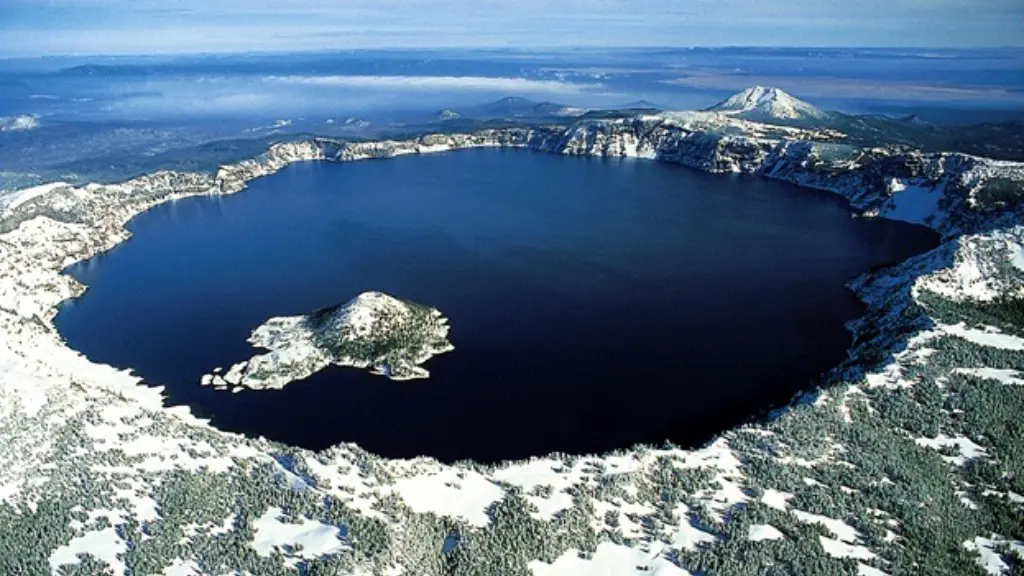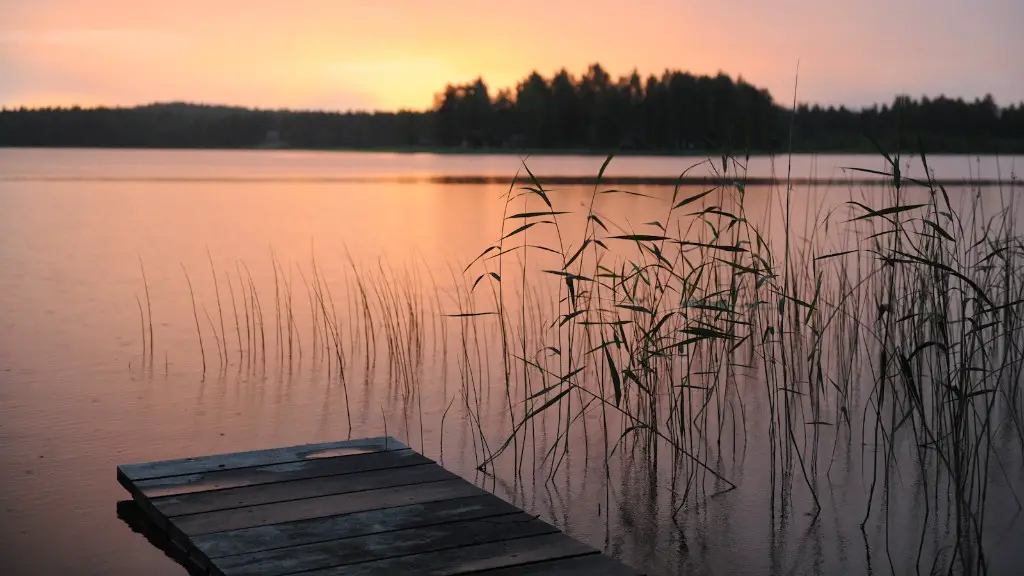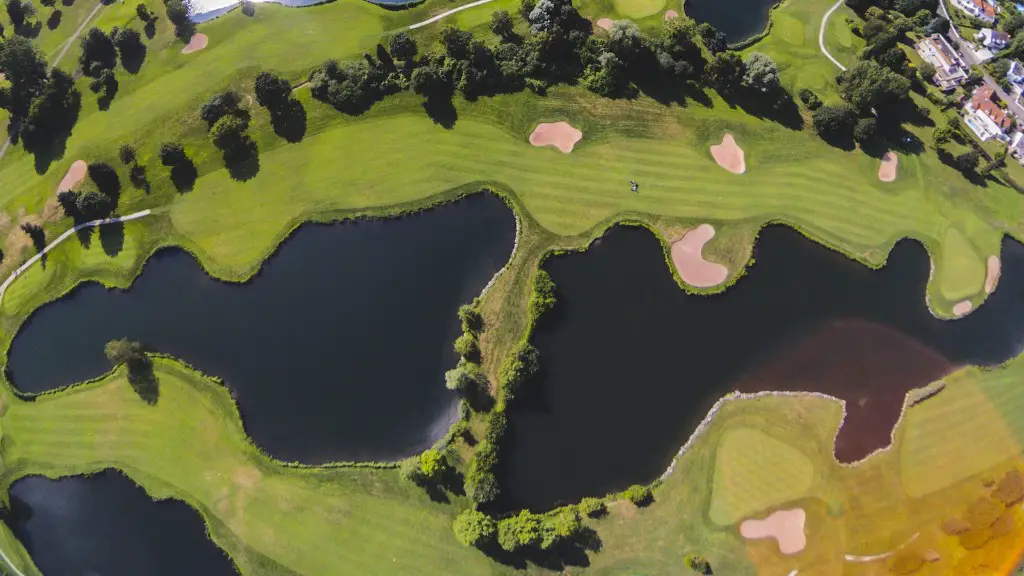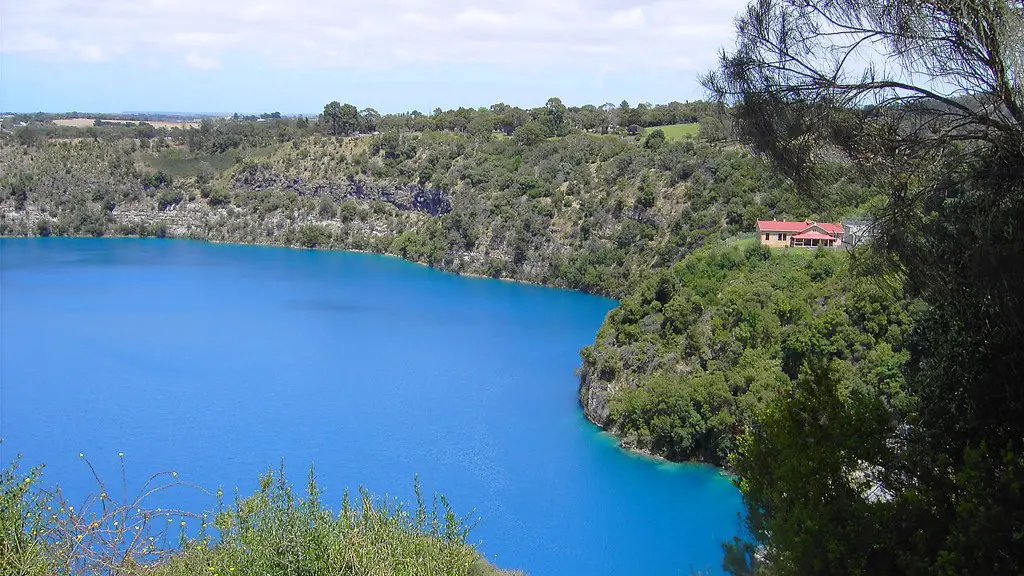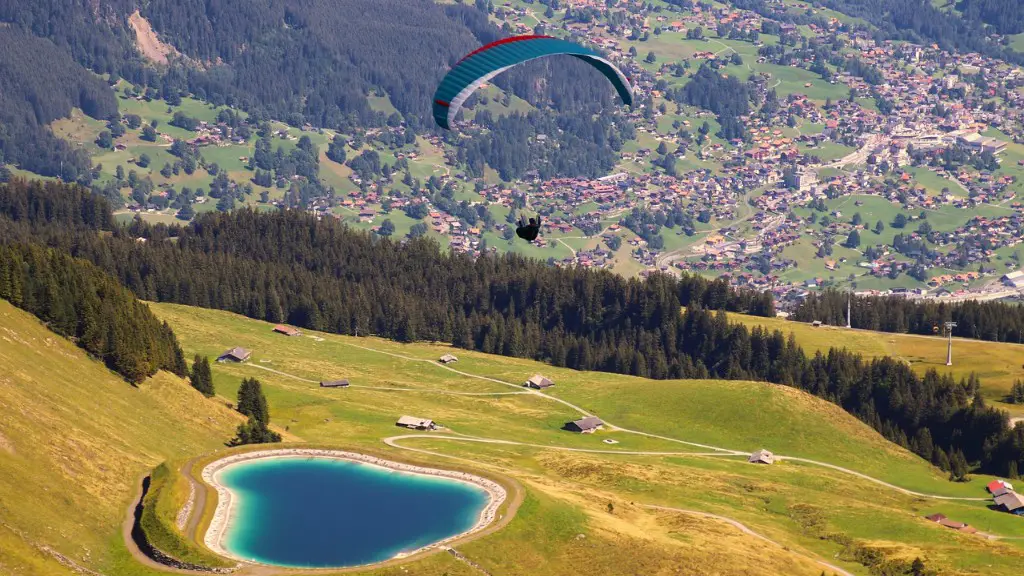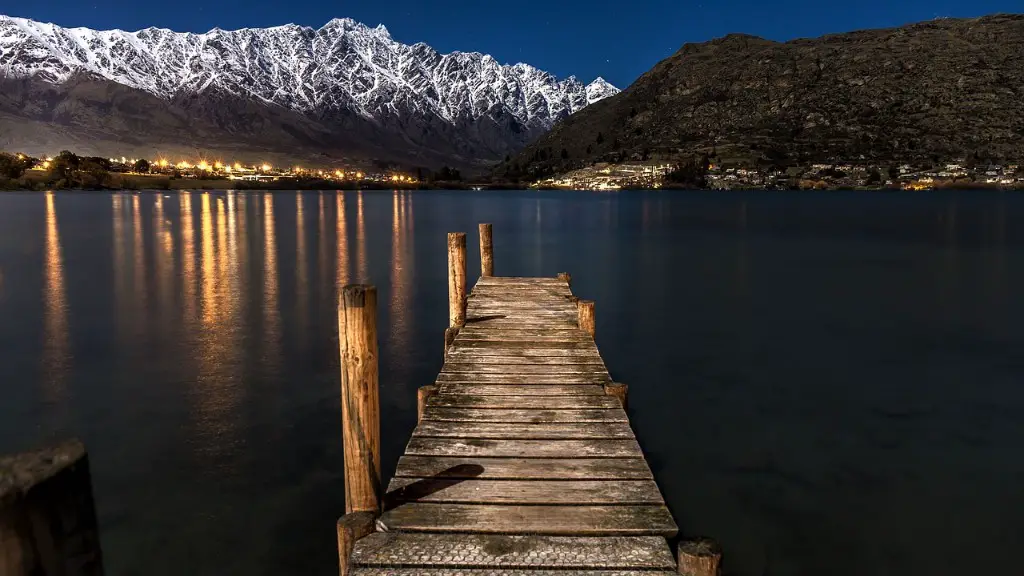Crater Lake is a caldera lake in south-central Oregon in the western United States. It is the main feature of Crater Lake National Park and is famous for its deep blue color and water clarity. The lake partly fills a nearly 2,148-foot (655 m)-deep caldera that was formed around 7,700 (± 150) years ago by the collapse of the volcano Mount Mazama following a major eruption.
Crater Lake is formed when a volcano erupts and the center of the mountain collapses, creating a huge crater. Over time, the crater fills with water from rain and snowmelt, creating a beautiful lake.
How did Crater Lake get filled with water?
Crater Lake is a beautiful lake located in the caldera basin. It is filled with rain and melted snow that fell within the basin. The lake is isolated from surrounding streams and rivers, thus there is no inlet or outlet to the lake. Its primary input is from annual precipitation in the region.
A tunnel through the dead aquatic moss at the bottom of Crater Lake would be an amazing sight. The dead moss layers accumulate over thousands of years, sometimes reaching 40 yards thick.
How long did it take Crater Lake to form
The caldera of Lake Toba is thought to have been formed about 5-6 thousand years ago by the accumulation of rain and snow. It is thought to have taken around 250 years for the caldera to fill to its present-day lake level, which is maintained by a balance between precipitation and evaporation, plus seepage.
Volcanic crater lakes are formed in the cavities from which magma is ejected. They can be small (maars) or large (calderas). Many examples can be found across Earth, in places such as the Eifel region (Germany), the Auvergne region (France), Indonesia, and central Africa.
Why can’t you swim in Crater Lake?
Crater Lake is one of the snowiest places in America, with an average of 43 feet of snow per year. This means that there are only a few months when people can swim at Crater Lake, usually from June through September. Visitors to the lake should be aware of the extreme winter conditions and plan accordingly.
Researchers have discovered colonies of moss and bacteria living at the bottom of Crater Lake. This discovery perplexes researchers because almost no nutrients are at the bottom of this nearly 2,000-foot lake, yet these organisms are thriving. One possible explanation is that the organisms are living off of the minerals in the rocks at the bottom of the lake. Another possibility is that the organisms are getting nutrients from the water that seeps into the lake from the surrounding rocks. Further research is needed to determine how these organisms are able to survive in such a nutrient-poor environment.
Can you swim inside Crater Lake?
The stunning blue color of Crater Lake is not only from its depth, but also from the clarity of the water. The blue beauty of Crater Lake extends beyond its depth and is a must-see for anyone visiting Oregon.
Lake Minnetonka is a large lake located in Minnesota. It is a popular spot for fishing, as it is home to a variety of fish species. However, due to stocking efforts in the late 1800s and early 1900s, only two of the seven original fish species still thrive in the lake today. These are the kokanee salmon and the rainbow trout. It is estimated that there are approximately 60,000 of each species in the lake.
Can you swim to the bottom of Crater Lake
If you’re looking to take a dip in Crater Lake, you’ll need to head to Cleetwood Cove Trail. It’s the only place in the park where swimming is allowed, and it usually opens up in mid to late June. So start planning your trip and packing your swimsuits!
There is a long history of volcanism at Mount Mazama, the volcano that houses Crater Lake. Future eruptions are likely to occur within the caldera and probably beneath the water’s surface.
When was the last time Crater Lake exploded?
Crater Lake is a volcano that last erupted about 4,800 years ago. Since then, it has remained quiet, allowing as much as 30 m (100 ft) of sediment to accumulate on the lake bottom.
Eruptions in deeper water are less likely to be explosive or affect areas around the rim, but the largest explosions could produce pyroclastic surges, hot, rapidly moving clouds of gas and ash, which could move out a few miles from vents along the margin of the lake.
Is Crater Lake the deepest lake in the world
Crater Lake National Park is home to the deepest lake in the United States and the seventh deepest lake in the world. The Cascade Mountains provide a dramatic backdrop to this natural wonder, which is a must-see for anyone visiting Oregon.
Crater Lake’s caldera-forming eruption occurred 7,700 years ago. The lake probably took about 460 years to fill, but estimates based on precipitation rates range from 420 to 740 years.
What are 3 facts about Crater Lake?
1. Crater Lake is the deepest lake in the United States.
2. There is no water outlet from Crater Lake.
3. The lake is a Native American legend.
4. There is a volcano in the middle of the lake.
5. The only place in the world this newt can be found is in Crater Lake National Park.
6. The water in Crater Lake is some of the clearest water in the world.
7. The average depth of the lake is about 1,000 feet.
8. The temperature of the water in Crater Lake can vary by as much as 20 degrees Fahrenheit depending on the time of year.
9. There is a Phantom Ship in Crater Lake.
10. Crater Lake National Park is one of the most popular national parks in the United States.
Crater Lake is a naturally occurring barren lake that was first stocked with trout fingerlings in 1888 by William Steel. The introductions of non-native fish continued until 1941, when the stocking of the lake was ended. Despite altering the lake’s natural condition, the stocking of Crater Lake with non-native fish provided recreational opportunities for the public.
Warp Up
The crater lake is formed when the magma chamber of a volcano empties out, causing the overlying rock to collapse.
The scientific name for Crater Lake is caldera, and it is formed when a volcano collapses in on itself. The rim of Crater Lake is about 2,148 feet (655 meters) above the water surface. There are two islands in the lake, and they are Wizard Island and the Phantom Ship.
